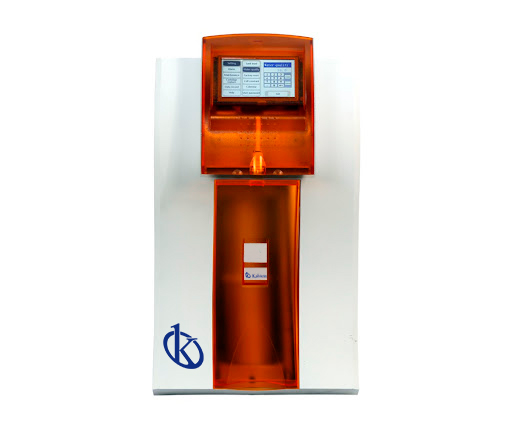A water deionizing system is a water purification equipment used in laboratories, with direct connection to the network and continuous flow, which performs a water filtration through mixed bed resins by ion exchange. In other words, cation and anion exchange resins are intimately mixed and contained in a single pressure vessel. As a result, the water quality obtained from a mixed bed deionizer is considerably high.
Deionization of water is a process that occurs when there is an immediate need for purified water distribution. Deionization should be performed when the water is close to being used, as the purity of the extremely high water is rapidly degraded.
How does a deionizer system work?
Deionization systems work by replacing negative and positive molecules in water with hydrogen (positive) and hydroxyl (negative) molecules. In fact, organic substances are removed by filtration, which improves water quality and prevents the formation of inlay deposits. For this reason, deionized water is one of the most preferred use options in laboratories.
This process consists of the elimination of inorganic ions present in the water by the use of ion-absorbing resins. They can be used relatively easily and require no energy input. Deionizers contain cation exchange (RES-SO3H) and Anion exchange (RES – CH2N (CH3)3OH+) insoluble resins. These resins can be kept in separate columns or in a mixed-bed column. The running water passes through the resin columns, which exchange the solute electrolytes for H+ and OH- ions.
Structure and maintenance of a deionization system
Cationic exchange resins are negatively charged to capture positively charged ions (Cations) and anion exchange resins are positively charged to capture negatively charged ions (Anions). These resins should be regenerated or replaced, according to the manufacturer’s recommendations when the conductivity of the outlet water is greater than 20 mS/cm, therefore they should be checked regularly to ensure that they are not saturated and produce the required sufficient level of purity. This test is performed by measuring the electrical conductivity of the treated water.
Electrical conductivity is the property that inorganic salts have in solution (electrolytes) to drive the electric current, that is, pure water practically does not drive the electric current while water with dissolved salts conducts it very well (seawater). Positively or negatively charged ions are those that conduct the current and the amount driven depends on the number of ions present and their mobility.
What do we offer you in Kalstein?
At Kalstein we are MANUFACTURERS and we offer an excellent range of purification systems designed with the highest technology and quality, at the best prices on the market. This time we present YR51 Water Purification Systems, the industry’s most complete water purification solution for highly regulated applications. When your application requires the ultimate in water purity, Kalstein provides you with the perfect solution. With a constant water purity of 18.2 Μo.cm. Typical scientific applications include:
- ICP-MS (inductively coupled plasma mass spectrometry).
- Molecular biology techniques.
- Analysis of ultra races.
- Electrochemistry.
- Electrophoresis.
- GFAAS (atomic absorption spectrophotometry in graphite furnace).
- HPLC.
- IC (ion chromatography).
- Cultivation of mammalian and bacterial cells.
- Molecular Biology.
- Plant tissue culture.
- Qualitative analysis.
For more information we invite you to take a look at HERE

